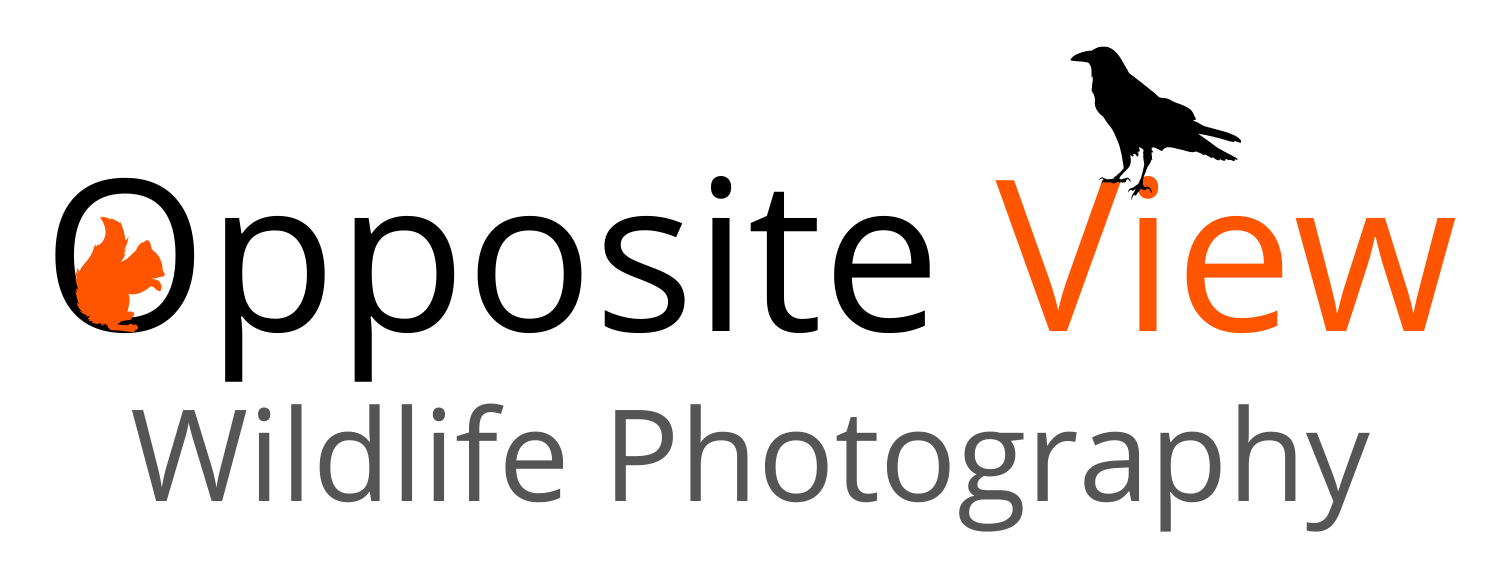Without wishing to spoil the rest of this blog, 2024 felt like the year my photography clicked, if you’ll pardon the pun. There were encounters with new and familiar species and, for some of these, the bonus of decent images. But there was one subject that truly made me reflect on my wildlife photography journey since Christmas 2010 – the ring-necked parakeet.
Originally from Africa and southern Asia, these cheeky birds have made their mark here thanks to warmer winters. Once pets, they escaped into the wild and have thrived in urban parks and gardens across Britain, making them the most northerly breeding parrots in the world. When I lived in south London, I used to see and, more often, hear these noisy and colourful creatures flying past my flat. They were also one of the first subjects I pointed my lens at in Richmond Park. I remember that my first photo of a ring-necked parakeet was a distant shot – the bird was only a tiny green figure in a mass of bare branches. It wasn’t an awful image but pretty dull. It was taken at a time when I was delighted to simply photograph any animal. Not a lot of thought really went into those early images.
Well, in November, I got another opportunity to photograph these birds on a damp and dull walk in Dawsholm Park in Glasgow where a small population of ring-necked parakeets thrive. The close encounter and resulting images were a clear demonstration of how much I’ve improved since I first picked up a camera – particularly in my fieldcraft and my ability to visualise the photo I want. And why wouldn’t I have improved? A lot of time has passed since those first parakeet pictures and my experience has obviously grown. However, as I’m often quite tough on myself, it was great for my confidence to have a memory card full of parakeet images I was happy with.
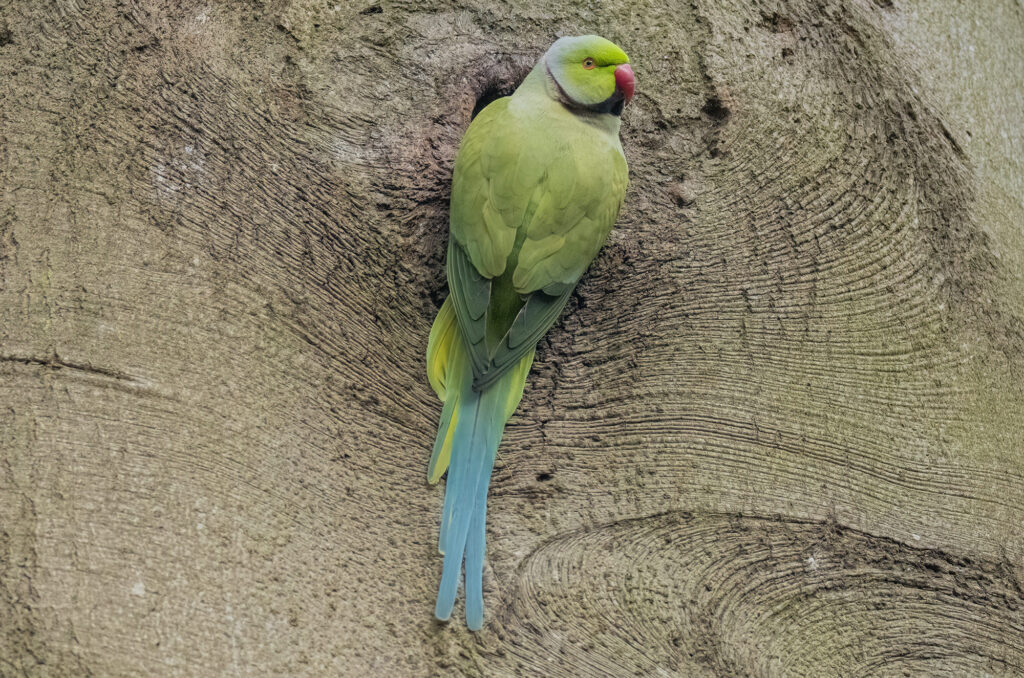
And it wasn’t just parakeets that made me feel – for the first time – that I could truly call myself a wildlife photographer. In 2024 there were plenty of animal encounters and enthusiastic responses to my images – it was a really wild year.
Baby boom
While walking along the riverbank on my local patch in March, I discovered a pair of long-tailed tits building an intricate nest in a bramble bush. Over the next few days, I took the time to photograph their meticulous work, using back-button focus to navigate the maze of branches obstructing my view. Although many attempts failed, I captured a few images I was proud of, and I hoped to see fledglings soon.
Sadly, the nest was later damaged, with feathers scattered on the ground, suggesting predation and a failed breeding attempt. While disappointing, long-tailed tits are cooperative breeders, meaning they often help relatives raise young if their own nest fails. Hopefully, the pair contributed to a successful brood elsewhere.
A nest in Gartcosh Nature Reserve was more successful. While walking there in June a loud and constant bird call drew my partner and me to a dead tree. Initially, we thought it might be an alarm call, but when a tiny head popped out of a hole, we realised it was a nest of great spotted woodpecker chicks. These noisy chicks didn’t wait for their parents to arrive with food—they were constantly calling and peeking out of the nest, suggesting they were close to fledging.
From a respectful distance, I captured photos and videos of the chicks and the male bringing food. It was a wonderful springtime encounter that reminded me to pay attention to unusual sounds. Learning bird calls is a valuable skill, and the racket made by these young woodpeckers is one I certainly won’t forget anytime soon.
They weren’t the only ones busy breeding and I also enjoyed heartwarming springtime encounters with coots, great crested grebes and even a moorhen family nesting in a tyre.
The generation game
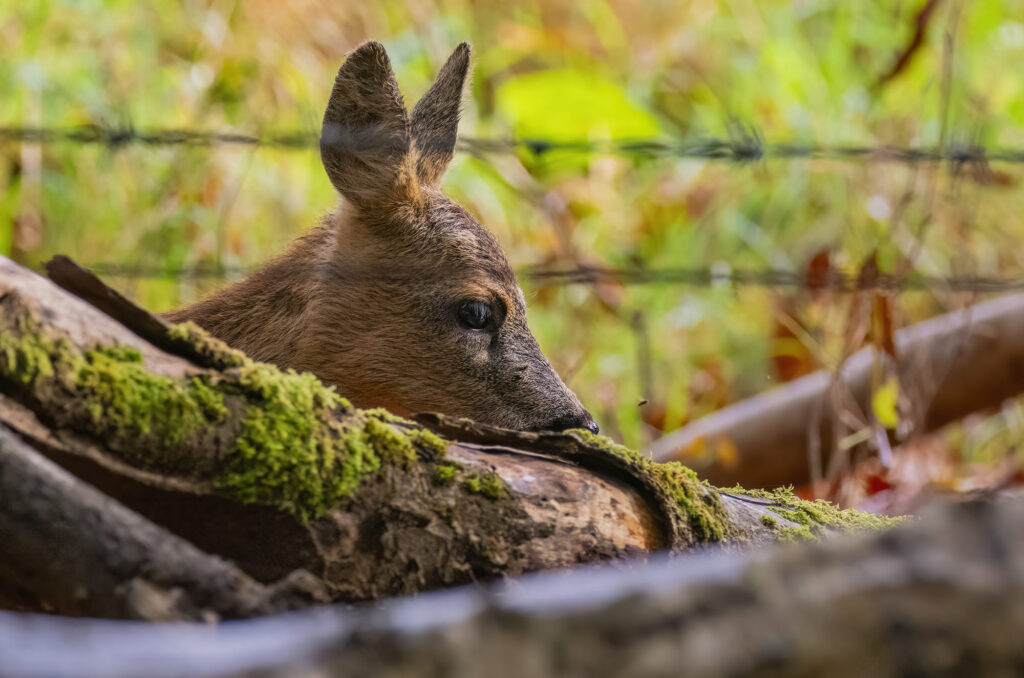
I’ve taken a lot of images of the local deer – some may say too many – and this means that I have an extensive collection of deer portraits to refer to. Early this year, I pulled these together to identify the individuals I photograph. I hoped to use this information to chart their progress and build my understanding of their behaviours as the younger individuals mature and, hopefully, create the next generation of my local roe deer.
Then, the next generation arrived! On a lunchtime walk in July, a flash of rust-coloured fur in the field caught my eye – a roe doe moving beyond the trees. As I watched, I noticed two much smaller shapes on my side of the fence – tiny roe deer kids, wandering through the long grass towards me. I captured some images from a respectful distance but moved away as they approached to avoid disturbing them and their mother Gamma.
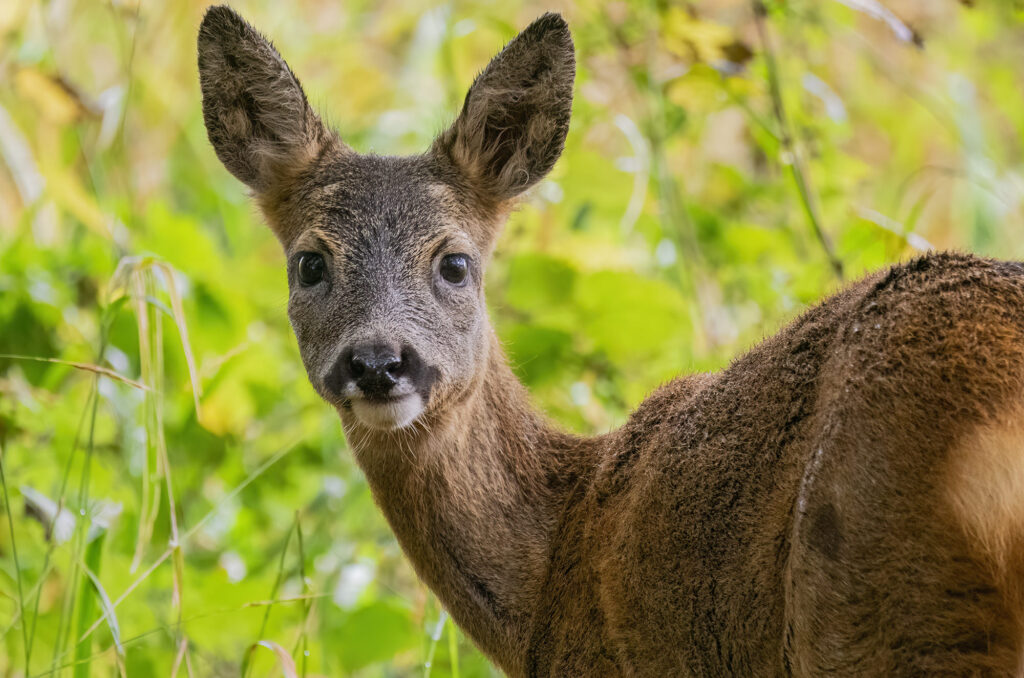
After a year without spotting any roe deer kids on my local patch, I had almost given up hope of seeing youngsters again. I’m looking forward to following the antics of Gamma’s offspring as they grow in 2025.
Further afield
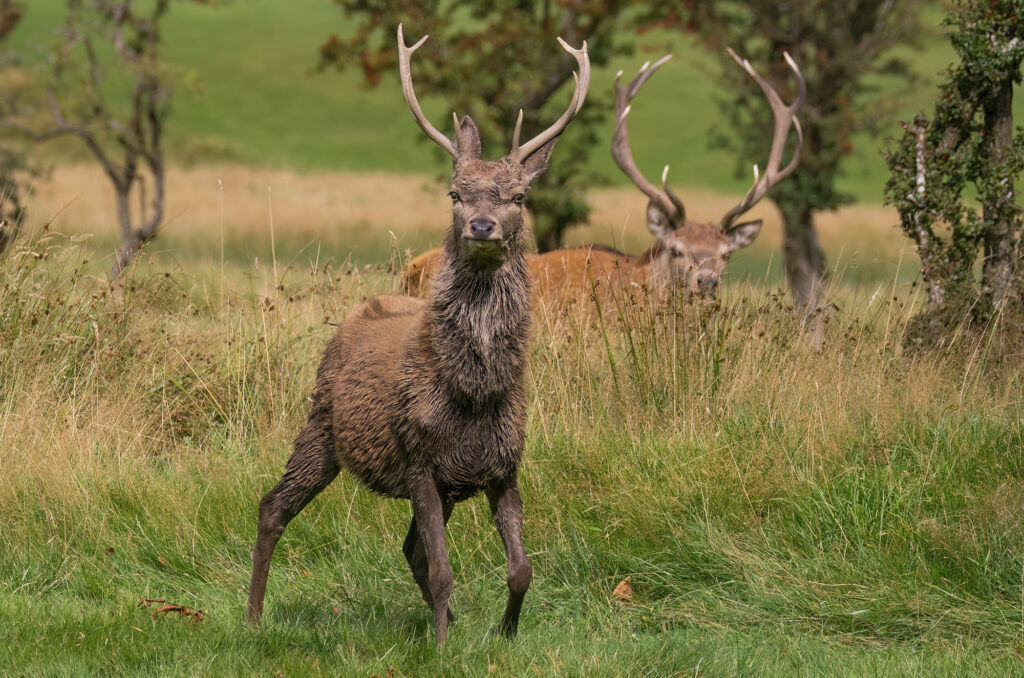
We were lucky to fit in a few breaks last year. As I noted in my blog about our trip to the Isle of Arran, we don’t go on wildlife-watching holidays. Any wildlife photography has to fit in with the activities we want to do and the places we want to explore.
However, it was pretty impossible to overlook the stunning wildlife during our breaks in 2024. On the East Neuk of Fife in March, we were treated to urban fulmars, wandering waders and nesting rooks. On the Northumberland coast in May, we saw more fulmars and also took a boat trip to Coquet Island for plenty more seabirds and a load of gorgeous grey seals. And our unforgettable week on Arran included seeing nearly all of ‘Scotland’s Big 5’.
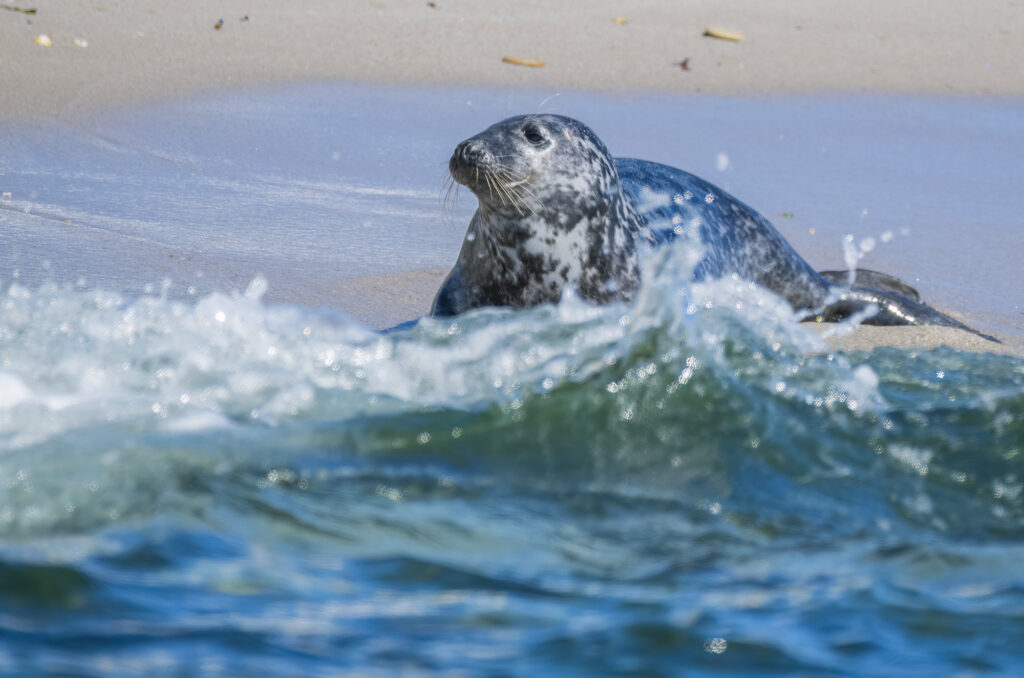
While I love my local patch, it’s always exciting to explore wildlife photography opportunities elsewhere and I’m hoping for more adventures like these in 2025.
Reflecting on recognition
In March, I was stunned to receive an email confirming my image had been shortlisted in the Scottish Wildlife Behaviour category of the Scottish Nature Photography Awards. After years of entering competitions, this was the first time any of my images made it past the initial round. I’ve come to understand why I didn’t succeed before, and I enter these competitions to challenge myself and view my work objectively. But, I’ll admit, I was also seeking some validation as a wildlife photographer.
The real shock came when I saw which photo had made the shortlist – Ex-damsel in distress, which I’d entered almost as an afterthought. It was a reminder of how subjective art can be. The experience reinforced my belief that a compelling image often comes down to how it resonates with others, not just the story behind it.

Judging photos can be difficult because it’s hard to separate what we see from what we felt when we took the shot. Judges only see the image, not the backstory, so my advice is to focus on the photo itself, not the narrative behind it. Don’t hesitate to enter photos you consider unconventional or imperfect—they may stand out. And above all, don’t overthink it.
Two of my images were also highly commended in the inaugural Deer Photographer of the Year competition. Again, I was astonished to have four shortlisted photos, with two advancing to the final stage. But it wasn’t all success.
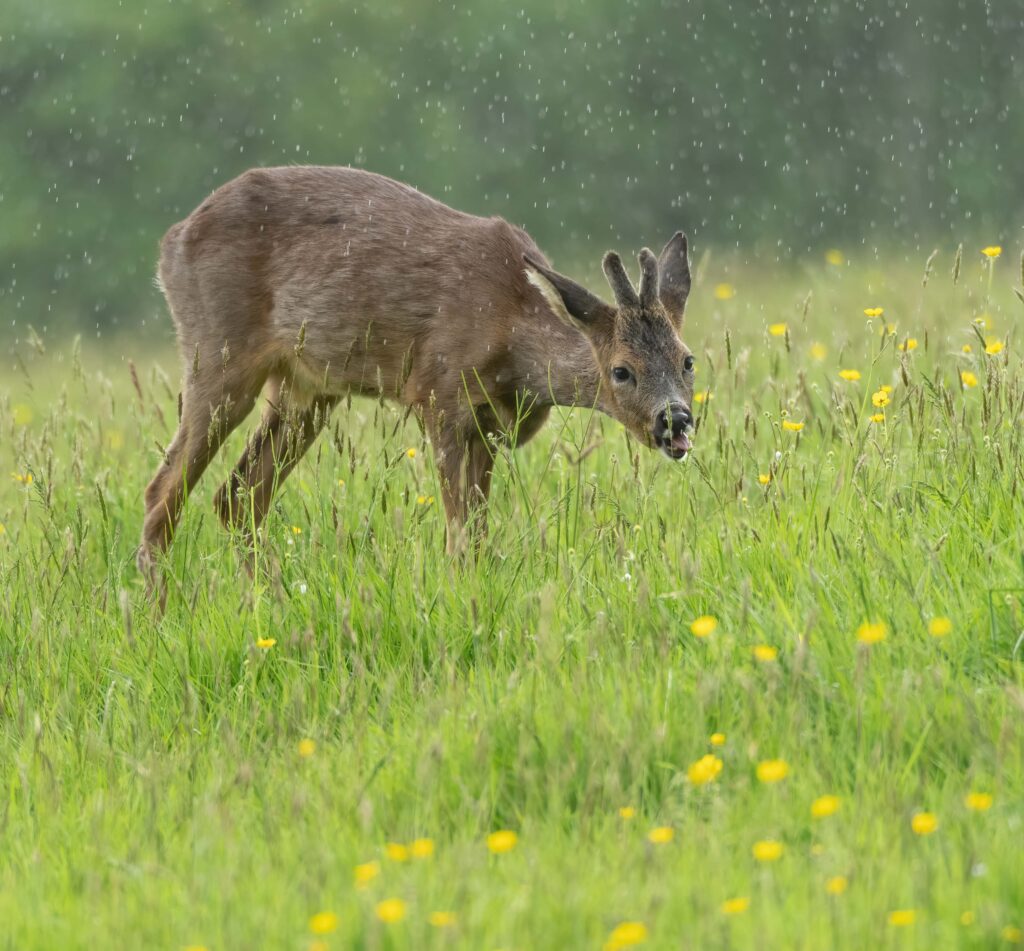
While I was beyond delighted to get the email confirming that I was a finalist in the British Wildlife Photography Awards – a competition I had been following nearly as long as Wildlife Photographer of the Year – the notification that I hadn’t made it into the book wasn’t as welcome. After shaking off the initial disappointment, I reminded myself how much I’ve progressed since those early parakeet photos. The black guillemot photo that took me so far in the competition was also captured at the start of my attempts to photograph these fascinating birds. There is more to come and there will always be other competitions, and, more importantly, other wonderful wildlife encounters to photograph.
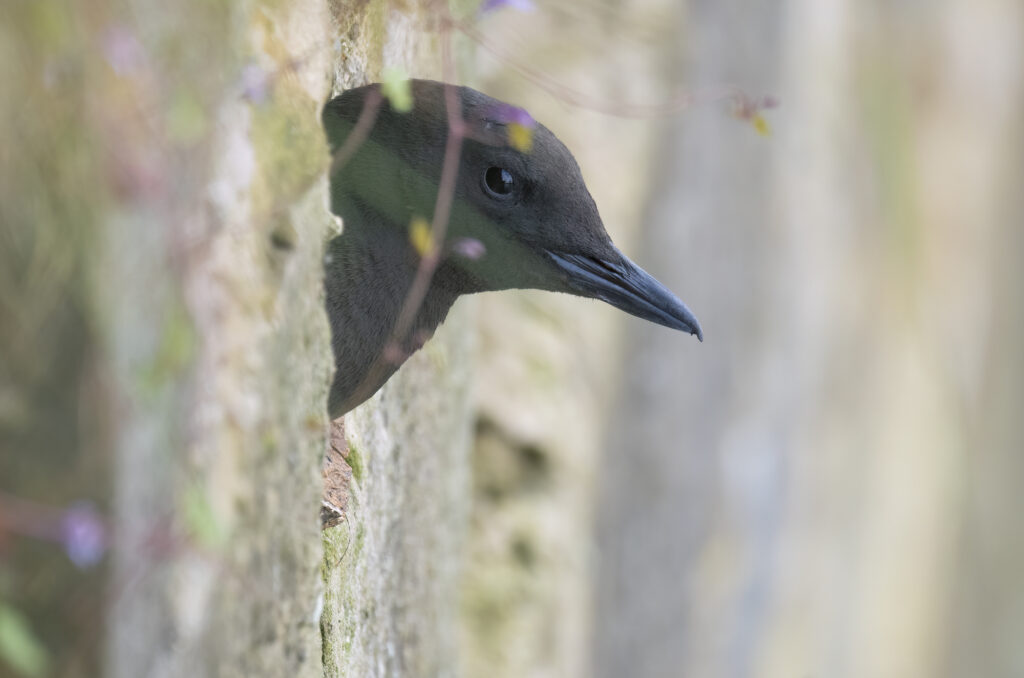
Fear(less) of missing out
Not making it into the British Wildlife Photography Awards book wasn’t the only disappointment of 2024. There were plenty of the usual “you should have been here five minutes ago” comments in hides and abandoned plans due to the increasingly extreme British weather. As a wildlife photographer, I have learned that patience is, indeed, a virtue and that a fear of missing out will drive you mad. However, that was tested when I received an unexpected invitation to appear on Scotland Tonight while poorly with COVID.
While I took an illness-induced afternoon nap, a message arrived in my inbox asking if I’d like to come on the programme to discuss the winners of the Wildlife Photographer of the Year awards and show some of my images to the viewers. I could have wept when I read it after waking up hours later. But as lovely and flattering an opportunity it was, there was no way I was well enough to take it up. There was a reason I was off sick from my day job. Believe me when I say no one would have wanted to look at my pasty face while I spluttered through my thoughts on the WPOTY winners. Hopefully, there’ll be other opportunities to share my passion for wildlife photography with a big audience…and not when I’m drenched in sweat and constantly coughing.
There’s a saying in Scotland that “whits fur ye’ll no go by ye” (what’s for you, won’t go by you), and that was of some consolation for all the missed opportunities in 2024. After all, who knows what 2025 will bring?
